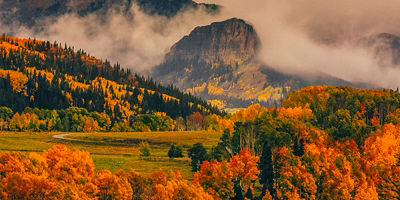
There is a staggering 840 million acres of public land in the United States—that’s more than one-third of the country—and that didn’t happen by accident. It took champions who pushed for protections and, in many cases, the power of the presidency was the key factor. It is important to note that all public land is Native land. Native people lived on and cared for the land long before state borders were drawn and national parks and other preserves were created. While Congress has the authority to, say, create new national parks, the president of the United States has the ability to take action to unilaterally protect landscapes (thanks to the 1906 Antiquities Act). Over the years American presidents have protected millions of acres of land for the public. While many presidents have had an effect on conservation and preserving public lands, in this guide we’ll highlight the ones who made an outsized impact during their time in office.
Ulysses S. Grant (1869 to 1877): The President Who Protected The First National Park
In 1868 President Ulysses S. Grant declared the Pribilof Islands in Alaska a reserve for the northern fur seal, which was the earliest instance of a president using federal land to protect wildlife. Then, in March of 1872, President Grant signed the Yellowstone National Park Protection Act. The act created America’s first national park, protecting a large swath of land “dedicated and set apart as a public park or pleasuring-ground for the benefit and enjoyment of the people.” This act not only protected the deep canyons, geysers, and hot springs of Yellowstone, but this movement to create national parks (often called America’s “best idea”) to protect the country’s most beautiful and important landscapes paved the way for future presidents (like Teddy Roosevelt) to aggressively expand conservation efforts. In 1916, President Woodrow Wilson created the National Park System to put all the parks under one federal body, and today the NPS manages 423 sites, 63 of which are national parks.
Trail Cred: In the spring of 1848 while serving in the Mexican-American War, Grant climbed the second highest peak in Mexico, the 17,802-foot Mount Popocatepetl.
Theodore Roosevelt (1901-1909): The President Who Signed the Antiquities Act Into Law
President Teddy Roosevelt, an avid conservationist and outdoorsman, was one of the most impactful presidents in regard to the protection of public land. Roosevelt designated an impressive 230 million acres of public land in the form of 150 national forests, 51 federal bird reserves, four national game preserves (the president loved hunting), five national parks, and 18 national monuments. In 1906 Roosevelt signed the Antiquities Act, which gave presidents the authority to protect "historic landmarks, historic and prehistoric structures, and other objects of historic or scientific interest that are situated upon the lands owned or controlled by the Government of the United States.” These protected areas were called national monuments. To this day, the act is largely regarded as one of the best ways to protect and defend American landscapes. Under that act, Roosevelt protected Native American artifacts and ruins at Wyoming’s Devils Tower, the country’s first national monument. The tower is regarded as a sacred site and tribes still perform ceremonies in the area. Roosevelt designated the Grand Canyon a national monument in 1908, and just over a decade later it became a national park.
Trail Cred: Roosevelt loved the outdoors his whole life, and went on frequent outdoor adventures—including a three-day hiking and camping trip in Yosemite with John Muir.
Franklin Delano Roosevelt (1933-1945): The President Who Helped Build Up Our Public Lands
While you cannot compare President Franklin Delano Roosevelt to his cousin, President Teddy Roosevelt, he still made a big impact on public lands in America. After the Great Depression, FDR enacted the New Deal, which included putting millions of Americans back to work through the Civilian Conservation Corps (CCC). The CCC was responsible for building up the infrastructure (like roads and trails and shelters) in many national parks and forests and ended up planting hundreds of millions of trees. FDR created 11 national monuments, like Joshua Tree National Monument (which later became a national park), and expanded others, like Dinosaur National Monument.
Trail Cred: FDR toured the Olympic Peninsula in 1937, from Lake Crescent to Lake Quinault. After the trip he voiced his support for the creation of Olympic National Park, which was established the following year.






















